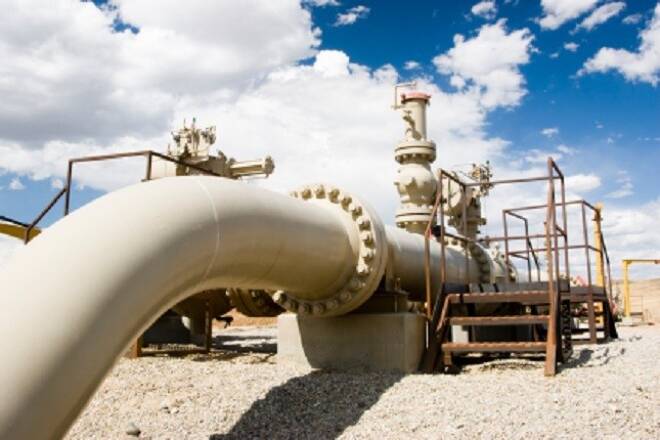Advertisement
Advertisement
Natural Gas Price Fundamental Daily Forecast – Traders Pricing-in Milder Temperatures After February 4
By:
The market is currently trading on the weak side of its key short-term support zone at $3.089 to $3.014. This puts it in a bearish position. If the selling continues then look for an extended move into $2.809 to $2.771.
Natural gas futures are trading slightly better early Thursday ahead of today’s U.S. Energy Information Administration’s (EIA) weekly storage report at 1530 GMT. The “inside” chart pattern suggests investor indecision and impending volatility. Despite the release of the report, most of the reaction today will be to any updated forecasts because the EIA report represents stale data and the weather forecasts represent future demand.
At 1043 GMT, March natural gas is trading $2.973, up $0.051 or +1.75%.
Short-Term Weather Outlook
According to NatGasWeather for January 24 to January 30, “A mild break will last one more day across the East with highs warming into the 40s to 60s. However, another polar blast currently advancing through the Midwest will sweep through the East Friday through Saturday with lows dropping back into the -10s to 20s for very strong demand. A brief break will follow to start next week ahead of the strongest polar blast in the series Tuesday through Friday. The West will see a mix of mild, cool, and cold. Overall, national demand will be moderate today then high-very high Friday through Sunday.”
Mid-Term Weather Outlook
NatGasWeather is saying the strongest polar blast in the current series is expected to take place January 29 to February 3. During this blast, temperatures are expected to be “dangerously cold and pushing deeper into the central and southern US, increasing the risk of freeze-offs for losses in production. Cold with this system is also favored to last a day or two longer across the northern U.S. and where colder trends occurred in the overnight data. The pattern would be quite ominous if not for increasing odds of the polar cold pool retreating into Canada February 4-7th.”
Furthermore, “Overall, a solidly bullish pattern through February 2-3, then becoming neutral to bearish. Clearly, the natural gas markets are weighing the back end of the 15-day forecast far more heavily with prices selling off from much higher overnight levels.”
U.S. Energy Information Administration Weekly Storage Report
Overall, the EIA estimates for the week-ending January 18 are indicating another week of below-average, deficit reducing withdrawals.
The range of guesses is wide once again. Bloomberg is looking for a 155 Bcf draw with predictions ranging from minus 85 Bcf to minus 163 Bcf. Reuters is looking for a 154 Bcf withdrawal. Its range of guesses is minus 130 Bcf to minus 166 Bcf. The ICE EIA Financial Weekly Index futures settled on Tuesday at minus 160 Bcf.
These estimates should be compared to the five-year average 185 Bcf pull. Last year, the EIA recorded a 273 Bcf withdrawal.
Forecast
The market is currently trading on the weak side of its key short-term support zone at $3.089 to $3.014. This puts it in a bearish position. If the selling continues then look for an extended move into $2.809 to $2.771.
Technically, you can’t even start thinking about a rally until traders recapture $3.014 then $3.089. Buying weakness doesn’t make sense either. You have to buy strength.
I tend to agree with the folks at NatGasWeather when they say, “How long the weather data shows this milder break lasting (After February 4) is now of considerable interest,” with longer range models as of Wednesday suggesting it might not last more than five to seven days.
About the Author
James Hyerczykauthor
James Hyerczyk is a U.S. based seasoned technical analyst and educator with over 40 years of experience in market analysis and trading, specializing in chart patterns and price movement. He is the author of two books on technical analysis and has a background in both futures and stock markets.
Advertisement
